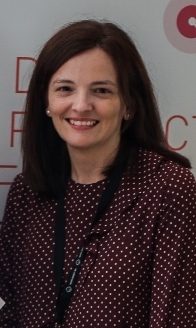Tests in baby and childcare articles
Products for babies and childcare articles are classified as consumer goods, and as such, are regulated by Directive 2001/95/EC of the European Parliament and of the Council of 3 December 2001 on general product safety. The objective of this Directive is to guarantee that products placed on the market are safe.
Performing safety tests to demonstrate compliance with technical safety measures is essential to guarantee that baby and childcare products are safe and comply with Directive 2001/95/EC.
In this sense, we place our laboratory at your disposal to perform physical, chemical and flammability tests on baby and childcare articles, according to European and international regulations and legislations.
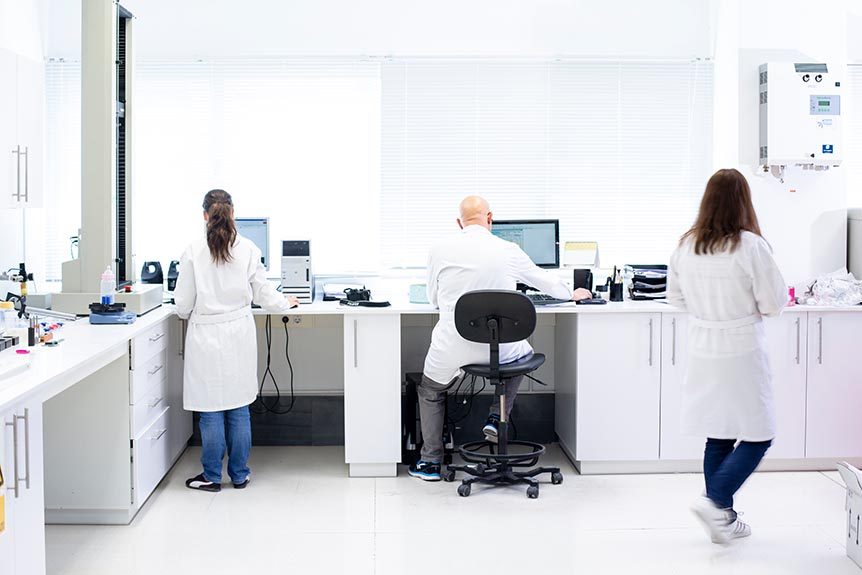
Testing services for baby and childcare articles
We perform safety tests on all small child articles (soothers, soother holders, feeding bottles, teats, cutlery and feeding utensils, etc.) in accordance with European and international regulations, as well as applicable legislation (REACH, food contact, etc…).
We perform safety tests on all large childcare articles (pushchairs, carry cots, highchairs, cots, cribs, reclined cradles, bathtubs, etc.) in accordance with European and international regulations, as well as applicable legislation (REACH, food contact, etc…).
At the AIJU laboratory we perform safety tests for different international markets, applying US regulations (ASTM) and those of other European countries (NF, BS).
In order to assess the safety of non-standardised child products, at AIJU we perform tailor-made safety studies taking into account the intended user, the useful life of the product, etc.
Textiles and baby clothes (baby clothing, bibs, etc.) are critical articles because they are in direct contact with the skin of the baby, and can cause allergic reactions if they contain harmful substances. In addition, they are easily accessible with the baby’s mouth and hands, and small pieces of the decorations could come off during use or when the baby handles them.
At AIJU we participate in the standardisation committees, so we always have the latest updates and criteria. In the case of baby clothes, the committees in which we have an important presence are:
- AEN/CTN 40/GT 8 “Seguridad para la ropa infantil”
- CEN TC 248 WG 20 “Safety of children’s clothing”: working group in charge of safety in children’s clothing.
- CEN /TC 248 WG 34 “Risk in the sleeping environment”: working group in charge of safety in textiles used in the sleeping environment.
At the AIJU laboratory we perform physical-mechanical, chemical and product information safety tests on clothes for babies, in line with current safety regulations:
- Safety Tests on Children’s Clothing. Cords and Drawstrings according to Standard EN 14682
- Safety Tests on Baby Clothes according to Standard UNE 40902
- Safety Tests on Baby and Children’s Footwear according to UNE 59300 Standard.
European Regulation No. 1907/2006, commonly known as REACH, is the most important piece of legislation governing the use of chemical substances in consumer products. The obligations it imposes affect the manufacturer of the substance and the user thereof, with the ambitious objective of not allowing products to be placed on the market that contain substances whose use has not been authorised.
The Regulation is therefore especially important for manufacturers of consumer products such as baby and childcare articles. Manufacturers must be able to manage the documentation required to verify their compliance with the REACH obligations. At AIJU we help you with this management through the following activities:
- Establishing validity and acceptation criteria for the available documentation by suppliers.
- Establishing supplier evaluation criteria and actions to be followed.
- Review of company documentation for the exchange and compilation of supplier information.
SVHC substances (Annex 14) are known to be of particular concern due to their characteristics – carcinogenic, mutagenic, reproductive toxicity, persisting in the environment, bioaccumulative – or because they may entail other dangers (effects in the endocrine system, for example). Such substances require a special authorisation in order to be used, and some of them have restricted use for certain applications (Annex 17).
Substances such as phthalates, cadmium, lead, azo dyes are the most frequent substances in most consumer products, and they are also the most in demand. Thanks to such tests, manufacturers not only guarantee the safety of their products, they also ensure they comply with the obligations imposed by their customers.
The services we offer are:
- Phthalate tests.
- Azo dyes and colourings tests.
- Cadmium and lead tests.
- Benzene tests.
- Toluene tests.
- Organotin compounds tests.
- Polycyclic aromatic hydrocarbons (PAHs) tests.
- Cr (VI) tests.
- Bisphenol A tests.
At AIJU we perform risk assessment of children’s products and other products that, although not intended for children, are in the child’s environment and whose risks must be controlled.
Risk assessment makes it possible to identify and assess the hazards the product might entail through the level of risk (critical, high, medium, low) associated with each of them. With this service you will be able to detect and minimise the risks and hazards of your product before making it available to consumers. Risk assessment is a very useful tool for making decisions as to the risk management measures you should take, and the scope of such measures.
In compliance with European legislation, all products must be safe and must not present any risk, or only minimal risks, compatible with the use of the product and considered admissible within the respect of a high level of protection of people’s health and safety.
Baby and childcare products must present appropriate product information which helps to identify the essential characteristics of the product, as well as the manufacturer or the person responsible for its commercialisation. It must also contain the necessary warnings for the safe use of the product, as well as instructions for use, cleaning, maintenance, assembly, etc., depending on the type of article.
At AIJU we carry out the assessment and/or review of the product information these products must include based on the applicable safety regulation, if any, and in addition, considering the applicable legislation, among others:
- Royal Decree 1468/1988, of 2 December, which approves the Regulation on labelling, presentation and publicity of industrial products intended for direct sale to consumers and users.
- Regulation (EC) No. 1935/2004 of the European Parliament and of the Council of 27 October 2004, on materials and articles intended to come into contact with food, and repealing Directives 80/590/EEC and 89/109/EEC.
- EU Regulation No. 1007/2011 on textile fibre names and related labelling of the fibre composition of textile products.
- Royal Decree 928/1987 on the labelling of the composition of textile products.
Critical tests are partial standard tests which manufacturers may use to perform production controls in its different phases, to perform occasional product tests, etc.
The definition of critical tests can be carried out in different ways:
- In products which have been previously tested in AIJU, we select these critical points considering the initial results and/or weak points obtained in previous tests.
- If the products have not been previously tested in AIJU, we select the critical points according to our criteria, considering the most representative safety aspects in each product category. We make this selection after receiving the product in question, and after its inspection by AIJU technicians.
- Critical tests may be defined and selected directly by the requester of the test.
Consumer and public demand for children’s products with safety and quality guarantees is increasing.
That is why at AIJU we provide our customers with our certifications and seals like a tool that allows the end user to distinguish your product from those of the competition, and to offer them the confidence that they are buying an article with safety and quality guarantees.
The “CHECKED QUALITY” mark for children’s products allows end users to differentiate the products that have such a mark from those of the competition, not only in terms of safety, but also of quality, because in addition to European Union safety requirements, at AIJU we request additional requisites depending on the product. We also carry out an annual follow-up which guarantees the uniform level of quality of these articles.
What are the advantages?
- It makes your product stand out from others by the competition, increasing its credibility, safety and image in the market.
- It defines the quality of the product, based on objective criteria: safety regulations, technical specifications and additional quality requirements.
- It guarantees a uniform level of product safety on a continuous basis.
- It generates a prestige that guarantees a high safety level for the manufacturer’s products, checked and certified by a recognised and competent body.
The improvement of the safety and quality of children’s products is one of the priorities of AIJU, which undertakes to:
- Promote the CHECKED QUALITY mark through oral and written media, informative sessions, publications, in specialised magazines, etc.
- Periodically revise the requirements of the mark in order to achieve a useful tool that continuously increases its market position, and that evolves according to current safety and quality criteria.
- Educate consumers on the values of the products that have the mark, and which makes them different from those who do not.
- Publicly inform in an updated manner as to which products may use the CHECKED QUALITY symbol.
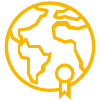
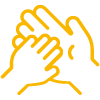
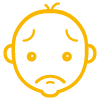
- Safety tests on baby and childcare articles are necessary to guarantee that the products are safe.
- Performing these tests at AIJU guarantees the international acceptance of the test reports that are obtained, because it implies that the safety tests have been performed in a European and international reference laboratory that is recognised by the competent authorities (both in market inspection and in import control) and certified by ENAC.
- Our principles of collaboration are: speed of response, service quality, confidentiality of information, and customer satisfaction. Our flexibility and customer orientation facilitate communication and understanding between all parties involved.
Baby and childcare articles are not regulated by a specific safety directive. They fall under the consumer goods group, and are regulated by Directive 2001/95/EC of the European Parliament and of the Council of 3 December 2001 on general product safety.
The general product safety Directive refers to standards as “tools” which make it possible to assess product conformity, and it mentions different options for assessing safety:
- National technical standards – transposition of harmonised European standards-;
- National technical standards – transposition of non-harmonised European standards-;
- National standards;
- Recommendations of the European Commission;
- Codes of good practice regarding product safety that are currently in force in the sector;
- Current state of the knowledge and the technique.
Therefore, performing safety tests to demonstrate compliance with standards is essential in order to be able to place baby and childcare articles on the market and to demonstrate that they are safe products.
Firstly, we determine the regulations and legislation that apply to the particular product in order to know what type of product it is and whether there is an applicable technical regulation.
If there is no such applicable regulation, we perform a safety test of the product applying all the available technical reference documentation, and taking the intended user into consideration.
We then carry out all the determinations and tests that apply to the product, as well as any other determinations that the customer may request.
As a result, we obtain test reports in which we detail the obtained results and conclusions. The test reports obtained at AIJU are accepted internationally, since they are carried out in an accredited laboratory, located in Europe, and recognised by the competent authorities, both in market inspection and in import control.
Our technological institute has more than 30 years’ experience in the performance of safety tests on baby and childcare articles.
First laboratory in Spain accredited by ENAC (National Accreditation Entity) since 1989, as per ISO/IEC 17025 for the performance of these tests (accreditation No. 6/LE016).
We are an active member of several national and international standard-setting forums and committees related to child safety.
Participation in these committees guarantees knowledge of and constant updating in technical aspects, criteria and pre-regulatory work.
- AEN/TC 172 “Infancia”
- AEN/TC 172 SC2 “Artículos de puericultura”
- AEN/CTN 40/GT 8 “Seguridad para la ropa infantil”
- CEN /TC 252 WG 1 “Seating and body care”: Working group on seating articles and childcare.
- CEN /TC 252 WG 3 “Wheeled transportation”: Working group on wheeled transportation.
- CEN /TC 252 WG 5 “Feeding, drinking, sucking and similar functions”: Work group on childcare products for feeding, drinking, sucking and similar functions (soothers, feeding bottles, soother holders…).
- CEN /TC 252 WG 6 “General and common safety specifications” Working group in which the general requisites for childcare regulations are drawn up.
- CEN /TC 207 WG 2 “Requirements for children’s and nursery products”: Working Group on children’s furniture.
- CEN TC 248 WG 20 “Safety of children’s clothing”: working group in charge of safety in children’s clothing.
- CEN /TC 248 WG 34 “Risk in the sleeping environment”: working group in charge of safety in textiles used in the sleeping environment.
Specific facilities for the performance of tests on baby and childcare products.
Equipment required to carry out all the tests: climatic chambers, test masses and probes, adjustable ramps, fatigue benches, universal traction machines, etc. Most of this equipment has been specifically developed by our technical staff.
We also have sound-proof and anti-vibration rooms in which the heavy equipment is located: fatigue benches for the application of dynamic loads, test equipment for pushchairs – testing on irregular surfaces and handlebars – and other fatigue equipment to perform static and dynamic strength tests.
We have specific rooms and leading equipment to carry out all chemical tests applicable to children’s products:
- Gas chromatographers with mass spectrometry detection (GC-MS).
- Gas chromatographers with flame ionisation detection (GC-FID).
- Liquid chromatography with time-of-flight mass spectrometry detection (LC-QTOF).
- High-performance liquid chromatography with diode-array (HPLC-DAD) and fluorescence detection.
- Optical emission spectrophotometry with inductive plasma coupling (ICP-OES).
- Optical emission spectrophotometry with mass spectrometry detection (ICP-MS) with and without coupling with liquid chromatography.
- Ultraviolet-visible spectrometry.
